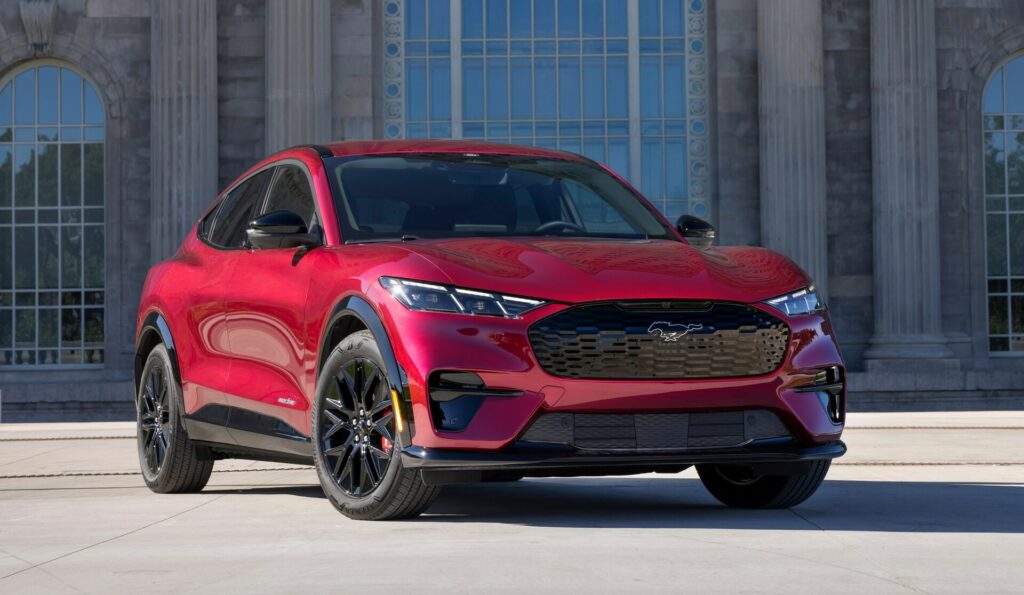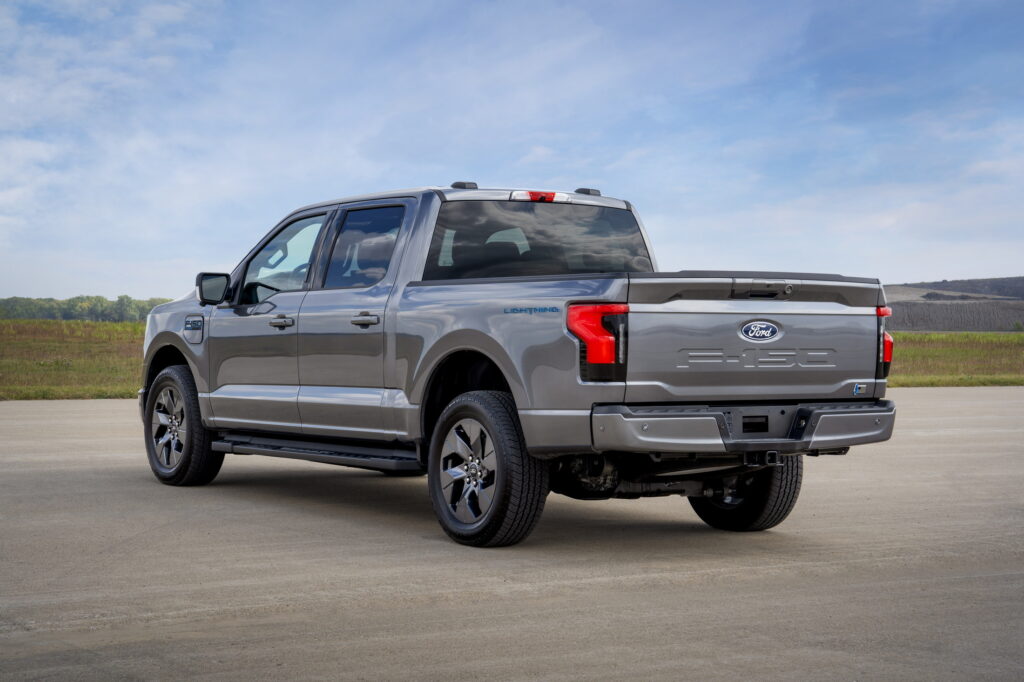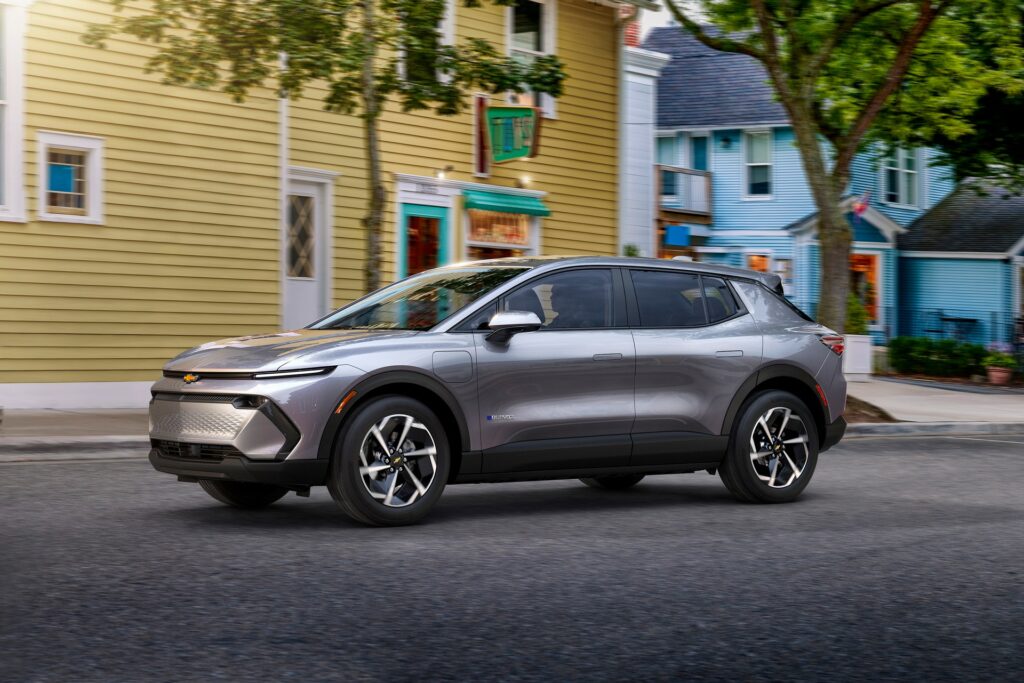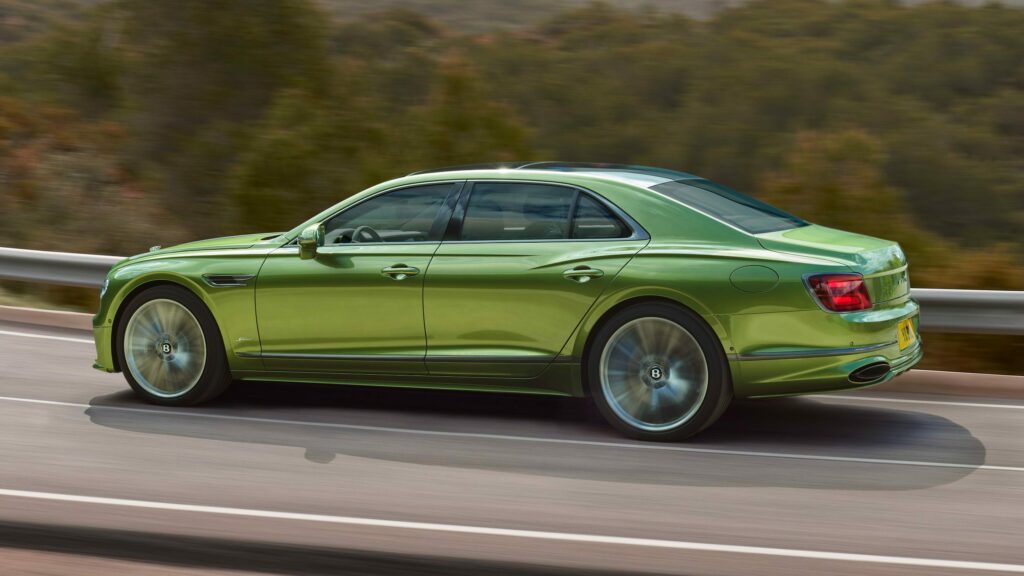Nissan’s $29,990 Leaf Costs Less But Feels Like So Much More: Review
The elimination of the clean vehicle tax incentive in the US is expected to slow electric vehicle adoption, but newcomers are still on the horizon. This includes the redesigned Nissan Leaf, which seems perfectly designed for the post-credit era.
When it arrives at dealerships in the coming weeks with a starting price of $29,990, it will be the most affordable electric vehicle in America. A cheaper variant is also in the works and it’s rumored to begin at $25,360.
Also: Nissan Says It’ll Build A Leaf NISMO If Enough Of You Shout Loud Enough
In both cases, the 2026 Leaf lands well below Tesla’s most affordable offerings yet, the larger Model 3 and Model Y Standard, which shed more features than we can comfortably count just to hit their $36,990 and $39,990 price points respectively.
However, unlike those models, the Leaf is so much more than a cut-rate EV. It’s comfortable, quiet, and surprisingly quick. The model also incorporates lessons learned from the previous two generations, giving it a leg up on a number of competitors.
QUICKFACTS
| › Model: | 2026 Nissan Leaf |
| › Dimensions: | 173.4 in (4,404 mm) Long 71.3 in (1,856 mm) Wide 61.3 in (1,557 mm) Tall 105.9 in (2,689 mm) Wheelbase |
| › Battery: | 75 kWh |
| › Output: | 214 hp and 261 lb-ft |
| › Curb Weight: | 4,187 – 4,369 lbs* |
| › Range: | 259 – 303 miles* |
| › Price: | $29,990 |
| › On Sale: | Fall 2025 |
*Manufacturer
A Crossover-Inspired Design

Photos Mike Gauthier / Carscoops
When the original Leaf was launched in 2010, it looked like an other-worldly hatchback. The second-generation arrived seven years later with a more conventional design, but the timing couldn’t have been worse as crossovers recently began outselling cars.
That trend has accelerated since then, so it comes as little surprise the third-generation Leaf has been transformed into a crossover. This was a no-brainer and the model looks surprisingly upscale as it incorporates a number of high-end features including flush-mounted door handles and a dimming panoramic glass roof.
The latter is typically reserved for ultra-expensive vehicles such as the Cadillac Celestiq and McLaren 750S Spider, but Nissan made one standard on the $38,990 Leaf Platinum+. While it’s not as fancy as some of the other roofs on the market, it quickly transitions from transparent to opaque at the press of a switch. This is done in a sweeping pattern that mimics a traditional sunshade.
The dimming roof is a cool and surprisingly practical addition as officials noted it allows for improved aerodynamics and increased headroom, when compared to a traditional moonroof. The company also noted it provides improved heat and cold protection, which helps to increase efficiency.
Photos Mike Gauthier / Carscoops
Putting the roof aside, the 2026 Leaf has a streamlined face with LED headlights that can be connected by a thin illuminated strip. This helps to emphasize the crossover’s width, which has grown by 0.8 inches (20 mm).
All of the other dimensions are smaller than before as the crossover is 3 inches (76 mm) shorter, while 0.4 inches (10 mm) has been shaved from the wheelbase. Height was also dropped by 0.4 inches (10 mm), meaning the old hatchback was taller than the new crossover.
Interestingly, ground clearance falls from 5.9 inches (150 mm) to 5.3 inches (135 mm). This is surprising and designers deserve a lot of credit for making the model look more rugged and capable than it really is.
Design trickery aside, the Leaf adopts soft curves and flowing surfaces. They’re joined by hidden rear door handles and a pronounced spoiler. These elements help to lower the drag coefficient from 0.29 to 0.26.
Rounding out the highlights are 18- or 19-inch wheels and an available motion-activated power liftgate. The model also offers a stylish two-tone paint job as well as 3D holographic taillights. The latter have a “2-3” iconography, which is pronounced as “ni-san” in Japanese.
A Nice, But Cramped Cabin

Nissan adopted a ‘class above’ strategy for the latest Leaf and that’s clearly visible inside as the model feels surprisingly premium. That’s certainly true of our range-topping Platinum+ tester, which features dual 14.3-inch screens as well as a bright heads-up display.
They’re joined by heated Zero Gravity front seats that are wrapped in TailorFit upholstery. Nissan says the covering is softer than traditional leather, while also being more durable and eco-friendly as it’s made with 65% recycled materials.
The front seats are nicely bolstered and feature an interesting pattern that helps to elevate the cabin. They’re joined by power adjustment and lumbar support, making it easy to get comfortable.

Unfortunately, the rear seats leave a lot to be desired as legroom was tight for this 6’2” scribe. There’s a mere 31.8 inches (808 mm) of real estate, although the model offers plenty of headroom. While things are a mixed bag, the rear seats are heated and occupants will find two USB-C charging ports as well as air vents.
Speaking of space, the Leaf holds 20 cubic feet (566 liters) of luggage behind the second-row. That can easily be expanded to 55.5 cubic feet (1,572 liters) by pulling the releases on the second-row, which are accessible from the cargo area.
While there’s a decent amount of cargo room, the Leaf trails the Kona Electric and Niro EV by 8.2 cubic feet (232 liters). Both models also have a far more spacious second-row with over 36 inches (914 mm) of legroom.
Moving back up front, the Leaf sports a perfectly positioned wireless smartphone charger and a Bose premium audio system with speakers integrated into the front headrests. Other highlights include a frameless auto-dimming rearview mirror, a 64-color ambient lighting system, and a heated steering wheel.
The 14.3-inch infotainment system is fast and responsive, and features Google built-in. This provides easy access to Google Maps, Google Assistant, and the Google Play Store. The latter is worth mentioning as owners can download entertainment apps such as Prime Video and HBO Max. They can then watch movies or shows on the infotainment system, while their vehicle recharges.
Photos Mike Gauthier / Carscoops
The Google integration provides other perks as it makes long distance trips far less stressful. Once users enter their destination, Google Maps will recommend charging stops along the route and estimate how much charge they’ll have left once they arrive. Users can also adjust their desired charge level, so you could arrive at your hotel with an 80% charge instead of 30%.
Nissan continues to embrace ‘digital’ switchgear and there’s a row of high-tech climate controls below the infotainment system. I’ve had mixed feelings about these in the past, but the company has been working to improve them and they feel more natural than those found on the Murano.
Further below, there’s a push button shifter and dedicated audio controls. Buyers will also find a camera button, which offers a dizzying array of options. Highlights include a new Front Wide View, an Invisible Hood View, and an Intelligent Around View Monitor. The latter offers eight different angles, so you can see a virtual representation of the Leaf in its real-world environment.
Photos Mike Gauthier / Carscoops
Despite its affordable price tag, the cabin feels relatively upscale as there are soft touch plastics, metallic accents, and a stylish cloth accent on the dashboard. Controls are also intuitively laid out and fairly conventional.
That might sound minor, but EVs used to be purposely weird. This is no longer the case and the traditional approach should make the crossover more appealing to newcomers. That’s important as Nissan is expecting roughly 75% of Leaf buyers to be new to EVs, and they want to make the transition as easy as possible.
An Impressive Powertrain With 303 Miles Of Range

Electric vehicles have been getting better and that’s especially true of the Leaf, which can now travel up to 303 miles (488 km) on a single charge. That’s 91 miles (146 km) more than its predecessor and a whopping 230 miles (370 km) more than the first-generation EV.
A large part of this is due to the car’s new 75 kWh battery pack, which is significantly bigger than the previous 40 and 60 kWh options. It will eventually be joined by a smaller 52 kWh battery, which will power the entry-level S trim and be paired with a motor developing 174 hp (130 kW / 177 PS) and 254 lb-ft (344 Nm) of torque.
The rest of the lineup uses the 75 kWh battery as well as a motor producing 214 hp (160 kW / 218 PS) and 261 lb-ft (353 Nm) of torque. That’s 11 lb-ft (15 Nm) more than the old model, but you’re looking at a weight gain of around 331 lbs (150 kg).
Photos Mike Gauthier / Carscoops
While the S+ breaks the 300 mile (483 km) mark, the mid-level SV+ has 288 miles (463 km) of range. That drops to 259 miles (417 km) on the Platinum+, largely due to its 19-inch wheels. However, even in range-topping guise, the model offers 47 miles (76 km) more range than its predecessor.
Of course, most people travel less than 40 miles (64 km) per day. This means many owners could go a week without charging, so range anxiety shouldn’t be an issue.
That’s especially true nowadays as the Leaf features a NACS charging port and access to the Tesla Supercharger network. The latter consists of more than 20,000 fast chargers in the United States and they’re supported by a Plug & Charge capability.

Oddly enough, the NACS port is DC-only. For home charging, there’s a CCS (J1772) port on the driver’s side. This is a strange setup, but the Leaf was already in development when automakers started adopting the NACS standard so it’s kind of a half step.
Quirks aside, the Leaf has a 150 kW DC fast charging capability and this will enable the battery to go from a 10% to 80% charge in 35 minutes. Buyers will also find an improved 7.2 kW onboard charger and a portable charging cable that has 120V and 240V plugs.
The Leaf comes standard with a vehicle-to-load capability that transforms the EV into a giant battery pack. An adaptor can plug into the CCS port and provide 1,500 watts of power. The Platinum+ also offers a 120V outlet in the cargo area, which allows the car to put out a combined 3,450 watts. This should make the Leaf pretty handy during power outages and camping trips.

Getting back to the battery, Nissan focused on improved cold weather performance. As part of this effort, the battery is insulated and features an enhanced thermal management system. The model also captures waste heat from the motor and on-board charger, and repurposes it to warm the battery. This helps to increase range and charging performance.
On the topic of cold climates, the SV+ and Platinum+ offer a dedicated battery heater for $300. Those two trims also come with a heat pump, which warms the cabin more efficiently.
A Well-Rounded EV

While the Leaf is no lightweight, its 214 hp (160 kW / 218 PS) electric motor propels it with ease. It’s reasonably quick off the line and the motor’s instantaneous response further enhances the experience.
If you floor it, you’ll get a bit of torque steer. However, the overall experience is well-rounded and should feel familiar to those coming from ICE-powered vehicles.
Despite being around for nearly two decades, the 2026 Leaf is the first to ride on a dedicated electric vehicle platform. It’s the CMF-EV architecture, which also underpins the Ariya.
Michael Gauthier / Carscoops
This helps to deliver “segment above comfort” and the effort is aided by a new multi-link rear suspension, which reduces impact stiffness by nearly 30%. It replaces the old torsion beam setup and delivers a refined ride quality that soaks up road imperfections without making a fuss.
The good manners extend to the power steering system, which feels responsive and nicely weighted. However, there isn’t much joy to be had and it comes off a little lifeless.
The driving experience can be adjusted by a switch on the dash, which offers Normal, Sport, Eco, and Personal settings. The latter is customizable and offers two steering options, three acceleration profiles, and four levels of regenerative braking.

Speaking of the latter, there’s an E-Step button on the dash that significantly ramps up the regenerative braking. It takes a little getting used to, but the learning curve is relatively quick.
Thanks to the various settings, it’s easy to tailor the Leaf to your liking. This means owners can get everything from an ICE-like experience to a more traditional EV setup. That being said, there are limits and the crossover favors comfort over sport.
Suburban streets in southeast Michigan didn’t provide the most engaging driving route, but the Leaf felt secure and capable in corners. This comes despite the Platinum+’s 4,369 lbs (1,982 kg) of mass, which is roughly 1,300 lbs (590 kg) more than the similarly sized Kicks. While it’s undoubtedly porky, you don’t really get a sense of the crossover’s weight unless you really push it.
Around town, the Leaf is surprisingly comfortable and quiet. There is a little bit of wind noise at higher speeds, but the overall experience is relatively hushed.
A Value-Focused EV That Doesn’t Feel Cheap

All of this adds up to a compelling electric vehicle that’s comfortable and features a stylish new design. The $29,990 base price is also impossible to ignore, especially in the post tax credit era. As Nissan recently noted, the 2026 Leaf is actually $2,790 cheaper than the 2011 model despite tariffs, inflation, and 15 years of change.
While the base model comes nicely equipped, the sweet spot is the $34,230 SV+. It features heated TailorFit front seats as well as 14.3-inch displays. They’re joined by a wireless smartphone charger, a six-speaker audio system, and a host of driver assistance systems including ProPILOT Assist.
The Leaf also compares favorably to key competitors as it costs a whopping $9,610 less than the 2025 Kia Niro EV, despite offering an extra 50 miles (80 km) of range. The model also undercuts the Hyundai Kona Electric by $2,985 and can travel an additional 103 miles (166 km).
However, the biggest X factor is the reborn Chevrolet Bolt. It starts at $29,990 including a $1,395 destination fee, which means it undercuts the Leaf by $1,495. The company has also announced plans for an even cheaper variant that will arrive later for $28,995. That sounds pretty compelling, but the Bolt only provides an estimated 255 miles (410 km) of range.
Hyundai has also drastically cut prices for the 2026 Ioniq 5, dropping the model down to $35,000. That’s roughly the same as the mid-level SV+, which could make it an interesting alternative.
Competition aside, the Leaf is a fantastic car and a great electric vehicle. It builds on its predecessors, while also introducing a number of notable improvements. While we wish there was more second-row legroom and an all-wheel drive option, the redesigned model is a big step forward and one that will likely attract EV fans as well as new converts.

























